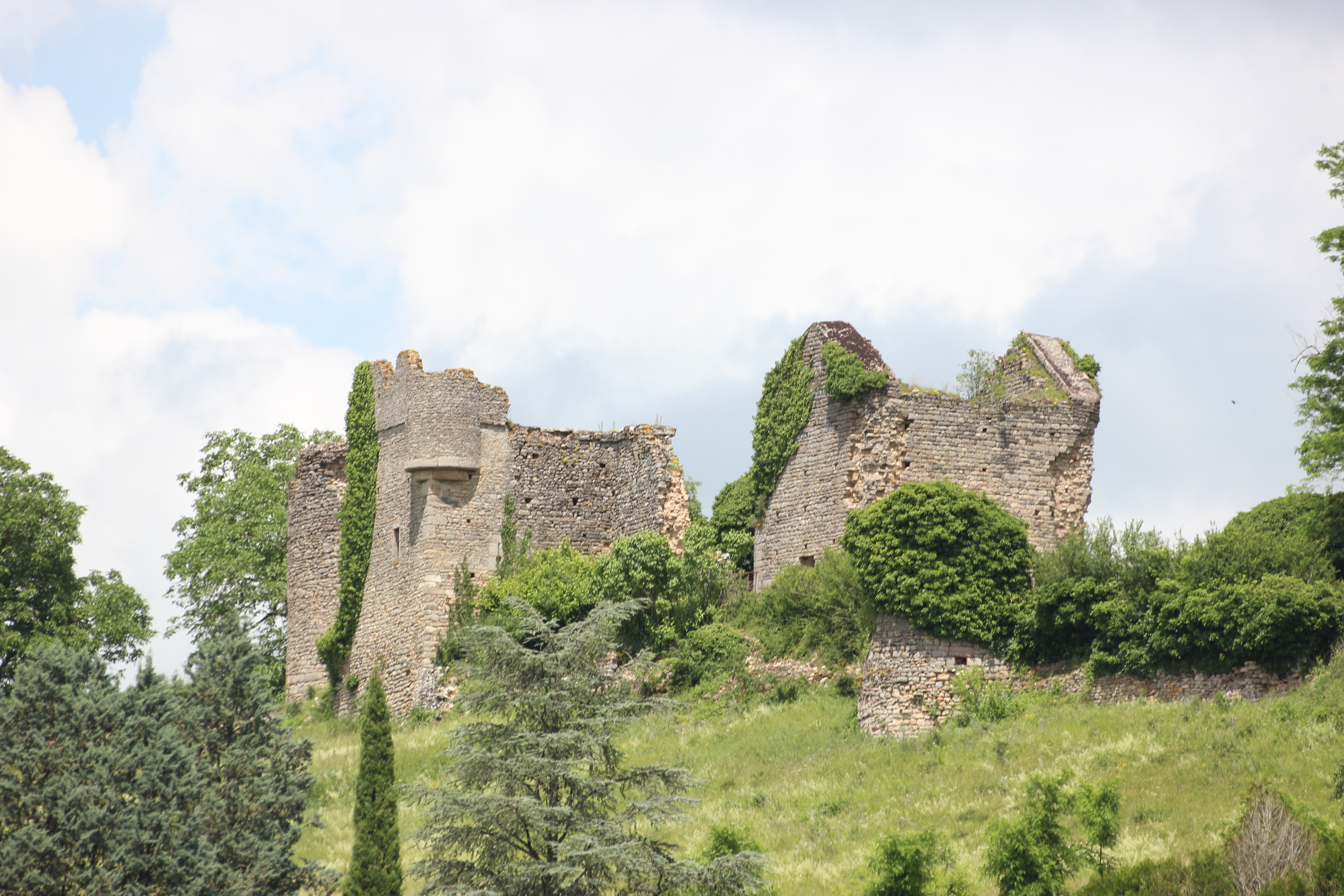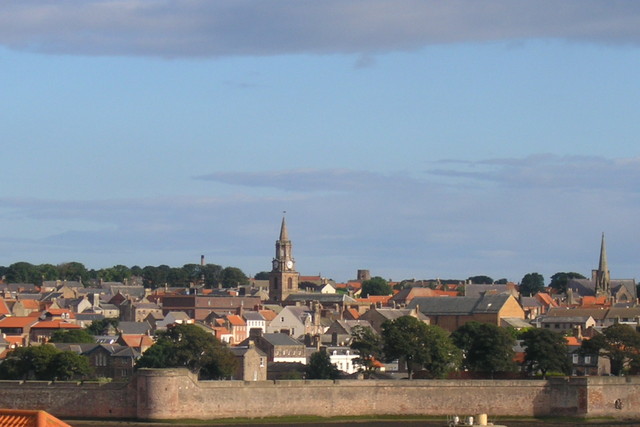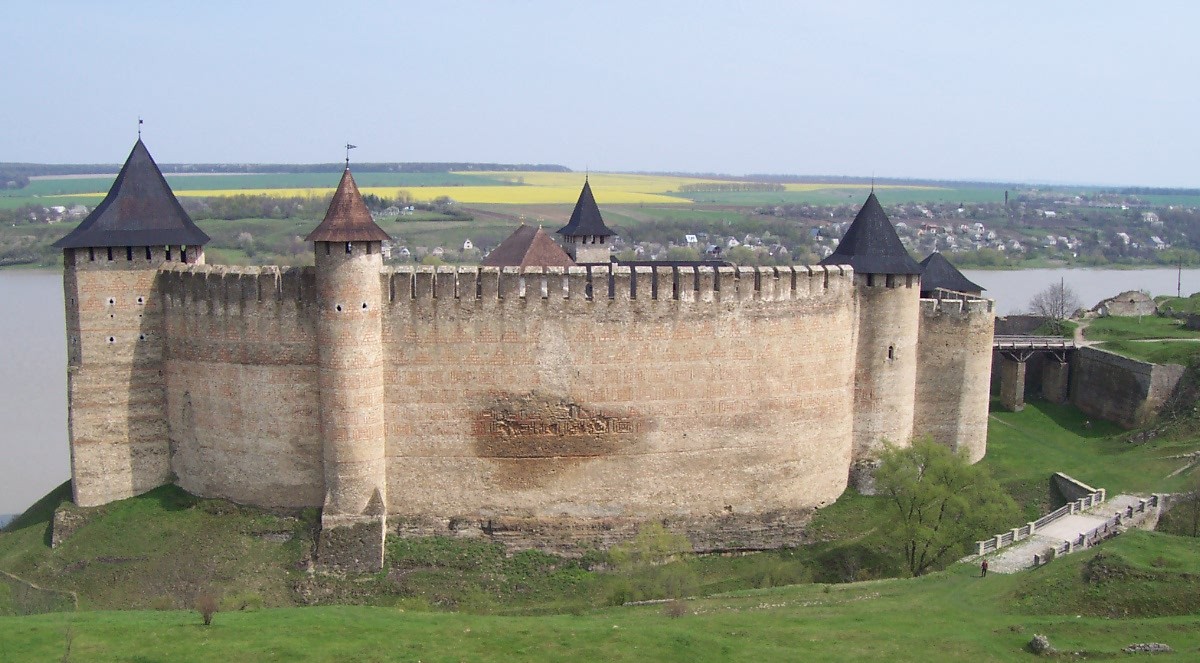|
Château De Sigy-le-Châtel
The Château de Sigy-le-Châtel is a ruined castle in the '' commune'' of Sigy-le-Châtel in the Saône-et-Loire ''département'' of France. Description The castle was built on a rocky outcrop dominating a pass. It is one of the oldest castles in Mâconnais. It consisted of a large irregularly shaped ''enceinte'' made of thick curtain walls. The entrance, to the north towards the plateau, was flanked by two fortified semicircular towers. The only remains are some stretches of wall, the bases of two large circular towers pierced by cannon positions and, at the western end, the corner of a brick building with a bartizan. The castle is privately owned and not open to the public. History ''Origins'' * 10th century : earliest record of the castle ''House of Luzy'' * 1203: Renaud de Luzy was ''seigneur'' * 12th century : reconstruction undertaken ''House of Sauzet'' * 1266: Archambaud de Sauzet, seigneur de Chanay was the husband of Sybille de Luzy, dame de Sigy * End of 13 ... [...More Info...] [...Related Items...] OR: [Wikipedia] [Google] [Baidu] |
Castle
A castle is a type of fortification, fortified structure built during the Middle Ages predominantly by the nobility or royalty and by Military order (monastic society), military orders. Scholars usually consider a ''castle'' to be the private fortified house, fortified residence of a lord or noble. This is distinct from a mansion, palace, and villa, whose main purpose was exclusively for ''pleasance'' and are not primarily fortresses but may be fortified. Use of the term has varied over time and, sometimes, has also been applied to structures such as hill forts and 19th- and 20th-century homes built to resemble castles. Over the Middle Ages, when genuine castles were built, they took on a great many forms with many different features, although some, such as curtain wall (fortification), curtain walls, arrowslits, and portcullises, were commonplace. European-style castles originated in the 9th and 10th centuries after the fall of the Carolingian Empire, which resulted ... [...More Info...] [...Related Items...] OR: [Wikipedia] [Google] [Baidu] |
Bartizan
A bartizan (an alteration of ''bratticing''), also called a guerite, ''garita'', or ''échauguette'', or spelled bartisan, is an overhanging turret projecting from the walls of late-medieval and early-modern fortifications from the early 14th century up to the 18th century. Most frequently found at corners, they protected a warder and enabled him to see his surroundings. Bartizans are generally furnished with oillets or arrow slits. The turret was usually supported by stepped masonry corbels and could be round, polygonal or square. Bartizans were incorporated into many notable examples of Scottish Baronial architecture. In the architecture of Aberdeen, the new Town House, built in 1868–74, incorporates bartizans in the West Tower. Gallery On walls File:Round Bartizan, Fortaleza de Santiago, Sesimbra, Portugal.JPG, ''Guarita'' at Fortaleza de Santiago, Sesimbra Municipality, Portugal File:Sudika Isla watchtower.jpg, ''Gardjola'' at the Spur, Senglea, Malta File:Can ... [...More Info...] [...Related Items...] OR: [Wikipedia] [Google] [Baidu] |
Guillotine
A guillotine ( ) is an apparatus designed for effectively carrying out executions by Decapitation, beheading. The device consists of a tall, upright frame with a weighted and angled blade suspended at the top. The condemned person is secured with a pillory at the bottom of the frame, holding the position of the neck directly below the blade. The blade is then released, swiftly and forcefully decapitating the victim with a single, clean pass; the head falls into a basket or other receptacle below. The guillotine is best known for its use in France, particularly during the French Revolution, where the revolution's supporters celebrated it as the people's avenger and the revolution's opponents vilified it as the pre-eminent symbol of the violence of the Reign of Terror. While the name "guillotine" dates from this period, similar devices had been in use elsewhere in Europe over several centuries. Use of an oblique blade and the pillory-like restraint device set this type of gui ... [...More Info...] [...Related Items...] OR: [Wikipedia] [Google] [Baidu] |
Charles IX Of France
Charles IX (Charles Maximilien; 27 June 1550 – 30 May 1574) was List of French monarchs, King of France from 1560 until his death in 1574. He ascended the French throne upon the death of his brother Francis II of France, Francis II in 1560, and as such was the penultimate monarch of the House of Valois. Charles' reign saw the culmination of decades of tension between Protestants and Catholics. French Wars of Religion, Civil and religious war broke out between the two parties after the massacre of Vassy in 1562. In 1572, following several unsuccessful attempts at brokering peace, Charles Arranged marriage, arranged the marriage of his sister Margaret of Valois, Margaret to Henry IV of France, Henry of Navarre, a major Protestant nobleman in the line of succession to the French throne, in a last desperate bid to reconcile his people. Facing popular hostility against this policy of appeasement and at the instigation of his mother Catherine de' Medici, Charles oversaw the massacre ... [...More Info...] [...Related Items...] OR: [Wikipedia] [Google] [Baidu] |
Louis-Emmanuel D'Angoulême
Louis-Emmanuel de Valois (Clermont-en-Auvergne, 28 April 1596 – Paris, 13 November 1653) was count of Auvergne and duke of Angoulême. Biography Louis-Emmanuel de Valois, comte d'Alais, was the son of Charles de Valois, the illegitimate son of King Charles IX and Marie Touchet. His mother was Charlotte de Montmorency, daughter of Henri I de Montmorency. Louis de Valois became Commendatory abbot of the Abbaye de la Chaise-Dieu in 1608, and Commendatory Bishop of Agde in 1612 until 1622, when he renounced his benefices. On 1 January 1624 he became Colonel-General of the Cavalry and on 17 April 1635 ''Maréchal de camp''. On 29 October 1637 he was appointed Governor of the Provence, starting from January 1638. During the Fronde, he refused to obey the orders of Cardinal Mazarin and was recalled to Court in September 1650. He was replaced as governor in February 1653 and became Minister of State on 20 July 1653. He died 4 months later. On the death of his father in 1650, he b ... [...More Info...] [...Related Items...] OR: [Wikipedia] [Google] [Baidu] |
Counts And Dukes Of Angoulême
Count (feminine: countess) is a historical title of nobility in certain European countries, varying in relative status, generally of middling rank in the hierarchy of nobility. Pine, L. G. ''Titles: How the King Became His Majesty''. New York: Barnes & Noble, 1992. p. 73. . Especially in earlier medieval periods the term often implied not only a certain status, but also that the ''count'' had specific responsibilities or offices. The etymologically related English term "county" denoted the territories associated with some countships, but not all. The title of ''count'' is typically not used in England or English-speaking countries, and the term ''earl'' is used instead. A female holder of the title is still referred to as a ''countess'', however. Origin of the term The word ''count'' came into English from the French ', itself from Latin '—in its accusative form ''comitem''. It meant "companion" or "attendant", and as a title it indicated that someone was delegated to re ... [...More Info...] [...Related Items...] OR: [Wikipedia] [Google] [Baidu] |
Fee (feudal Tenure)
A fief (; ) was a central element in medieval contracts based on feudal law. It consisted of a form of property holding or other rights granted by an overlord to a vassal, who held it in fealty or "in fee" in return for a form of feudal allegiance, services or payments. The fees were often lands, land revenue or revenue, revenue-producing real property like a watermill, held in feudal land tenure: these are typically known as fiefs or fiefdoms. However, not only land but anything of value could be held in fee, including governmental office, rights of exploitation such as hunting, fishing or felling trees, monopolies in trade, money rents and tax farms. There never existed a standard feudal system, nor did there exist only one type of fief. Over the ages, depending on the region, there was a broad variety of customs using the same basic legal principles in many variations. Terminology In ancient Rome, a "benefice" (from the Latin noun , meaning "benefit") was a gift of land () ... [...More Info...] [...Related Items...] OR: [Wikipedia] [Google] [Baidu] |
Blason Comte Fr Angouleme (Valois)
Blason is a form of poetry. The term originally comes from the heraldic term "blazon" in French heraldry, which means either the codified description of a coat of arms or the coat of arms itself. The Dutch term is , and in either Dutch or French, the term is often used to refer to the coat of arms of a chamber of rhetoric. History The term forms the root of the modern words "emblazon", which means to celebrate or adorn with heraldic markings, and "blazoner", one who emblazons. This form of poetry was used extensively by Elizabethan-era poets. The terms "blason", "blasonner", "blasonneur" were used in 16th-century French literature by poets who, following Clément Marot in 1536, practised a genre of poems that praised a woman by singling out different parts of her body and finding appropriate metaphors to compare them with. It is still being used with that meaning in literature and especially in poetry. One famous example of such a celebratory poem, ironically rejecting each pro ... [...More Info...] [...Related Items...] OR: [Wikipedia] [Google] [Baidu] |
Curtain Wall (fortification)
A curtain wall is a defensive wall between fortified towers or bastions of a castle, fortress, or town. Ancient fortifications Evidence for curtain walls or a series of walls surrounding a town or fortress can be found in the historical sources from Assyria and Egypt. Some notable examples are ancient Tel Lachish in Israel and Buhen in Egypt. Curtain walls were built across Europe during the Roman Empire; the early 5th century Theodosian Walls of Constantinople influenced the builders of medieval castles many centuries later. Curtain wall castles In medieval castles, the area surrounded by a curtain wall, with or without towers, is known as the bailey. The outermost walls with their integrated bastions and wall towers together make up the enceinte or main defensive line enclosing the site. In medieval designs of castle and town, the curtain walls were often built to a considerable height and were fronted by a ditch or moat to make assault difficult. Walls were topped ... [...More Info...] [...Related Items...] OR: [Wikipedia] [Google] [Baidu] |
Communes Of France
A () is a level of administrative divisions of France, administrative division in the France, French Republic. French are analogous to civil townships and incorporated municipality, municipalities in Canada and the United States; ' in Germany; ' in Italy; ' in Spain; or civil parishes in the United Kingdom. are based on historical geographic communities or villages and are vested with significant powers to manage the populations and land of the geographic area covered. The are the fourth-level administrative divisions of France. vary widely in size and area, from large sprawling cities with millions of inhabitants like Paris, to small hamlet (place), hamlets with only a handful of inhabitants. typically are based on pre-existing villages and facilitate local governance. All have names, but not all named geographic areas or groups of people residing together are ( or ), the difference residing in the lack of administrative powers. Except for the Municipal arrondissem ... [...More Info...] [...Related Items...] OR: [Wikipedia] [Google] [Baidu] |
Enceinte
Enceinte (from Latin ''incinctus'' "girdled, surrounded") is a French term that refers to the "main defensive enclosure of a fortification". For a castle, this is the main defensive line of wall towers and curtain walls enclosing the position. For a settlement, it would refer to the main town wall with its associated gatehouses, towers, and walls. According to the 1911 ''Encyclopædia Britannica'', the term was strictly applied to the continuous line of bastions and curtain walls forming "the body of the place", this last expression being often used as synonymous with ''enceinte''. However, the outworks or defensive wall close to the enceinte were not considered as forming part of it. In early 20th-century fortification, the enceinte was usually simply the ''innermost'' continuous line of fortifications. In architecture, generally, an enceinte is the close or precinct of a cathedral, abbey, castle, etc. This definition of the term differs from the more common use of ''en ... [...More Info...] [...Related Items...] OR: [Wikipedia] [Google] [Baidu] |
Mâconnais
The Mâconnais () district is located in the south of the Burgundy wine region in France, west of the Saône river. It takes its name from the town of Mâcon. It is best known as a source of good value white wines made from the Chardonnay grape; the wines from Pouilly-Fuissé are particularly sought-after. Almost all the wine made in the Mâconnais is white wine. Chardonnay is the main grape grown in the district—in fact, there is a Chardonnay, Saône-et-Loire, village of that name in the far north of the region. Some plantations of Gamay and Pinot noir are made into red and rosé Mâcon, making up no more than 30% of the total wine production. Gamay is grown in the Beaujolais cru of Moulin-à-Vent, which extends into the Mâconnais, but has little in common with the wines north of the border. Geography The geology is similar to that of the Côte d'Or (escarpment), Côte d'Or, but the gentle relief means that vines are mixed with other forms of farming in most of the area. In th ... [...More Info...] [...Related Items...] OR: [Wikipedia] [Google] [Baidu] |








